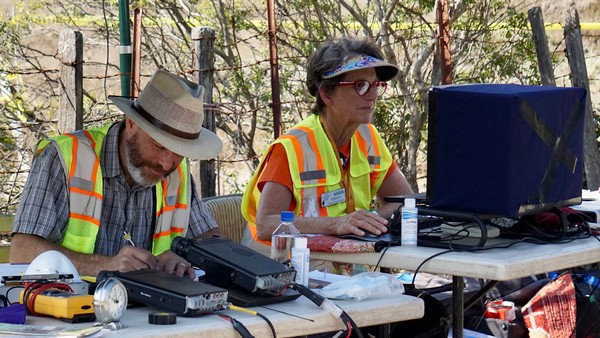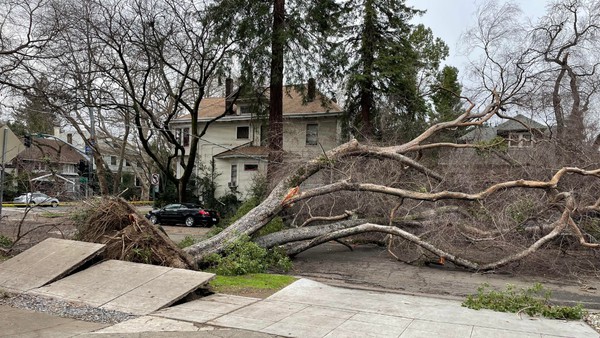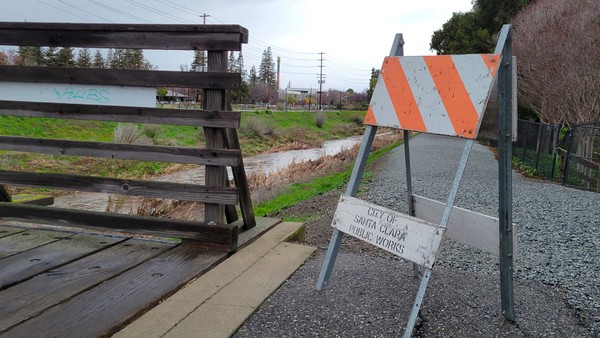Many regions in California were hit hard by the 2022-23 winter storms. In Sacramento, the losses came in the form of a thinning of the urban forest.
In the modern world of niche media and streaming entertainment, it’s not often that the citizens of the United States of America share a simultaneous experience. One such occurrence will take place this week, when the Federal Emergency Management Agency, in coordination with the Federal Communications Commission, conducts a test of the National Wireless Emergency Alert System.
This is the seventh time that this system will be used. An updated version of the Emergency Broadcast System—which delivered those familiar bursts of electronic noise followed by “This is a test…”—the Wireless Emergency Alert will simultaneously send a message to all of the nation’s cell phones. This will happen on Oct. 4 at around 5:20 p.m. Pacific Time.
This imminent event got us thinking. No, we weren’t thinking about ridiculous conspiracy theories, though predictably some folks are. Instead we thought it was an opportune time to contemplate the value of a smartphone in an emergency situation.
Making Radio Waves
This week we’re posting checklists for each of the counties we cover, offering information on resources that can help you stay safe during a local emergency. Each checklist is topped with a link to the county’s office of emergency services and specifics on how to sign up for local alerts. Counties may use different tech platforms to get the word out, but the end result is the same: real-time information dispensed simultaneously to your family, friends and neighbors. These are messages that could literally be lifesavers.
Many communities in California are lucky enough to have groups of local citizens who prepare not only to take care of themselves during a disaster but also to protect others. They form Community Emergency Response Teams (CERT) to assist first responders, train to do search and rescue, or form ham radio groups. California Local reporter Kimberly Hickok shares the story of how one such group of radio enthusiasts in the disaster-prone Santa Cruz Mountains works to keep the lines of communication open.
Listening Skills

How local amateur radio operators can help in the next big emergency.
Where to Find Emergency Information in Santa Clara County
Like any region of California, Silicon Valley is vulnerable to disasters. It’s a must to have a “go bag” packed and ready, but just as vital to ensure you’ll have access to important digital resources on your smartphone.
Get to Know a Group
Big Brother Big Sisters provides children facing adversity with strong, enduring, professionally supported mentorship. The organization believes that all children can achieve success when given the proper tools and resources—and volunteer mentors are among the most important of those resources.
→ Learn more
San Jose’s Planning, Building, and Code Enforcement Department is streamlining its permitting process to generate faster turnaround times.
(10/03/2023) San Jose Spotlight
Long-anticipated traffic-calming measures are coming to California Street, with major changes to the thoroughfare that will make it safer for pedestrians, bicyclists and drivers in Mountain View.
(10/03/2023) Mountain View Voice
San Jose is launching language interpreter services at some public meetings after translation mishaps earlier this year.
(10/03/2023) San Jose Spotlight
As Palo Alto prepares to update its zoning code to meet its targets for new housing, city officials remain undecided on a critical question: How far should they go when it comes to loosening density limits in residential zones?
(10/02/2023) Palo Alto Online
San Jose leaders say homelessness is a crisis, and they intend to jumpstart their stalled progress in meeting ambitious housing goals.
(10/02/2023) San Jose Spotlight
Despite a stated goal to celebrate diversity by marking more holidays, Palo Alto officials rejected a recommendation to designate both Juneteenth and Cesar Chavez Day as paid days off for city workers. Creating two new holidays, as some had suggested, would cost about $2 million.
(10/02/2023) Palo Alto Online
With little public debate, Palo Alto has largely abandoned its once popular program that buries power lines underground in residential neighborhoods. Some residents want to see the effort continue.
(09/28/2023) Palo Alto Online
Sunnyvale’s contract with its homeless service provider is on thin ice, and officials are demanding more answers. The Sunnyvale City Council voted 4-3 to not renew the city's $407,430 contract with HomeFirst.
(09/27/2023) San Jose Spotlight
More than 300 people filled the Los Altos Community Center to celebrate the life of former mayor Roy Lave. Lave, who died June 22, began his longtime community involvement as a two-term council member in the 1970s and 1980s.
(09/26/2023) → Read the full Los Altos Town Crier report
A small number of wild birds have tested positive for West Nile virus in Redwood City, Menlo Park and other parts of San Mateo County, prompting authorities to ask the public to report any dead birds they encounter.
(09/26/2023) Palo Alto Online
Mountain View is looking to expand its park system with an ambitious plan that will bring more parks, trails and open spaces to the city, laying the groundwork to create what's called the Parks and Recreation Strategic Plan.
(09/26/2023) Mountain View Voice
Newsroom employees at Embarcadero Media announced they are forming a union. The proposed Embarcadero Community News Guild includes reporters, editors, visual journalists and designers.
(09/26/2023) Palo Alto Online
San Jose spent $24 million in federal grants last year aimed at addressing homelessness. Of the more than 1,000 people experiencing homelessness that city-funded nonprofits reportedly connected with, less than 10% eventually transitioned into any type of housing.
(09/25/2023) San Jose Spotlight
In an effort to reduce the risk of wildfire, Cal Poly Humboldt faculty and students have embarked on a three-year study to investigate tree health.
(10/03/2023) YubaNet
Student workers at the 23-campus system say their pay is low, their hours are restricted and they get no sick pay. They are hoping to join the employees union to fix that.
(10/03/2023) CalMatters
The European Union has banned certain additives that are used in American candies and baked goods. California is on the cusp of prohibiting their sale by 2027.
(10/02/2023) CalMatters
A long-awaited, controversial report weighs updates to standards that state officials say have failed to protect fish and wildlife. But environmentalists, Native tribes and others already are furious about how long this has taken—and the state is years away from taking action.
(09/28/2023) CalMatters
Survivors who were sexually assaulted while imprisoned got an audience at the state Capitol, sharing their stories while testifying at a California Legislative Women’s Caucus briefing about abuse by staff at the Central California Women’s Facility in Chowchilla.
(09/26/2023) The Sacramento Observer











